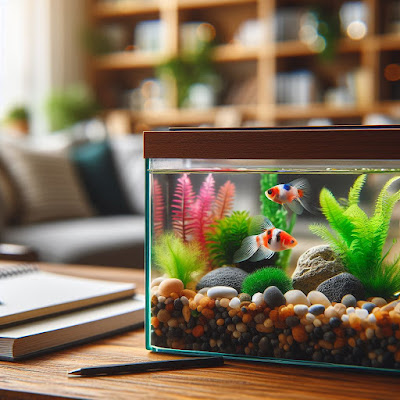Learn the Difference Between LPS (Large Stony Polyp) and SPS (Small Stony Polyp) Corals
A reef lover's dream… big ones, small ones, every color one can imagine. The possibilities are endless, almost too good to be true… Except they are not, because corals come in all shapes and sizes imaginable!
Whether you are just starting or have been doing this for years, you’ll find corals to match your taste and style. Over time, you’ll learn how to keep them together and to find the perfect combos. Experienced aquarists can sometimes even train their corals to grow in certain ways. It takes years to get this good and to truly establish a full-blown reef. Don’t get discouraged if you aren’t the most patient person though, the entire process is worth it. To start, learning about the different coral types, best placements, and growth habits will put you well on your way.
Two Main Types
Two of the main coral types typically seen in the aquarium hobby are the LPS (large stony poly) and SPS (small stony polyp) varieties. Both of these are created from a colony of tiny organisms that build themselves a calciferous skeleton. When we think of coral reefs, especially the bleached ones that look like bones, these are the homes where LPS and SPS coral colonies once thrived. Some grow slower or faster than others and, as they build upon themselves, they stretch out. Over the years the new growth and breakdown become what is known as a reef.
The main distinctive difference between LPS and SPS are their buds. LPS (large) have bigger, more fleshy heads while SPS (smaller) have tiny little polyps that may resemble little flowers. Each type comes in a variety of colors, and some do better under more or less specific water parameters.
LPS Coral Parameters
LPS could be considered the slightly easier of the two versions to keep. A brain coral is a common example of what these larger types will look like. While both the SPS and LPS prefer a decent amount of lighting, the LPS can handle less intense glow as long as it is present for the majority of the day.
The LPS are also hardier when it comes to water quality. The SPS need pristine conditions and are picky about the grade and nutrients in the tank. LPS don’t mind a little more indecisive water current. Though they do prefer a decent flow, they can get by and will sway along with different drafts. If they decide that the current is too much, they will retract.
SPS Coral Parameters
SPS we recommend trying after you have mastered keeping an LPS coral. The SPS and LPS both need the same type of care, but a slight spike in water quality can cause an SPS serious damage. All of their polyps will retract if they are feeling unwell and you will immediately notice any issues.
The SPS also prefer high-intensity lighting and a steadily strong water current. In the wild, these types like to grow into a tree-like structure at the top of the reef. They will branch out and eventually take up a lot of space. Always plan ahead when placing your corals and realize that an overlap can cause issues.
Placement of Different Coral Types
Beware mixing corals without doing your proper research. Both the LPS and SPS have tiny tentacles, called sweeper tentacles, that will sting surrounding animals if they feel threatened. The SPS uses them as a warning to surrounding coral, however, the LPS are far more aggressive. The LPS tentacles are long and will reach out specifically to sting anything too close. The SPS is not as strong and may receive harm from an LPS that doesn't want to be a friendly neighbor.
Beginner Recommendations
Overall we recommend the LPS as the better beginner coral. SPS should either be in a larger reef system or kept with like-minded species to keep their growth going strong. With both types, because of their calciferous skeletons, the nitrate levels need to be kept to an absolute minimum so as not to inhibit growth. Depending on the exact species, you may also need to add extra nutrients or feed the frags with specialty coral food. Do your homework on that exact coral beforehand and plan ahead. Envision your future reef tank and what you want it to look like. From there, start small and keep building. Soon you will find that you are well on your way to creating your dream reef.









.png)
